Is Banjo Easier or Harder than Guitar?
by Jay Sandwich
If you’ve never even touched a banjo or guitar, it’s likely both are going to seem rather hard to play, at first, but that’s to be expected. Unless, you’re a phenom, and we all know true phenoms are rare.

Genetics
First off, you need to realize that everyone has different shapes / sizes of hands, and different amounts of strength in our hands, wrists, and fingers.

Also, each of us has a different level of coordination, and dexterity when it comes to their hands and finger movements.
Not only that, we all have different capabilities for figuring out the music itself. We all hear music differently, and it’s harder to play something where we can’t understand the sounds we’re making related to pitch, tone, and volume.
Some people just hold a guitar or banjo for the first time, and it’s like a duck in a pond. Almost like they’ve played the instrument before in a past life.
Here’s a picture of a young Jimi Hendrix, holding a guitar when he was in the army. Although most people know how good Jimi eventually got at guitar in his lifetime, there’s no telling how he felt about guitar when he first picked one up. For all we know, maybe it took him a while to get the hang of it.
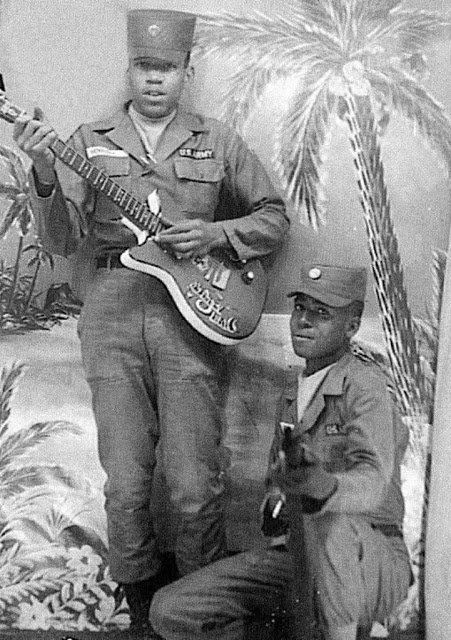
Or what about legendary banjo player Earl Scruggs. Here he is as a kid, holding a banjo, and looking oddly at ease holding it for such a young child.
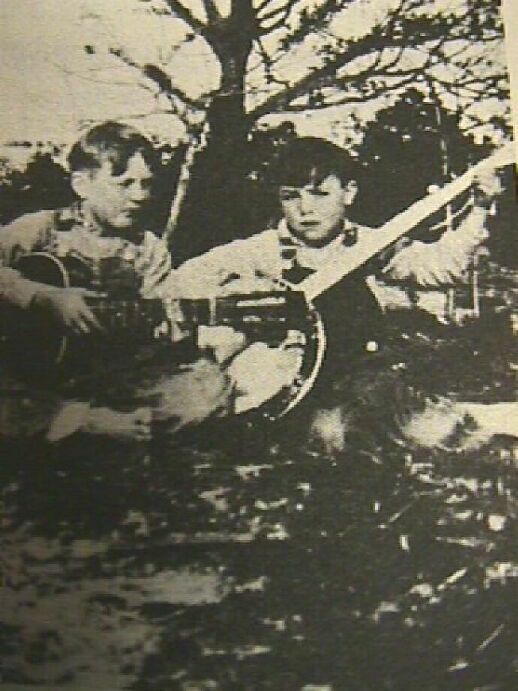
Banjo Vs. Guitar – Which Is Easier?
Ok, so obviously your genetics are going to play a part. Aside from that, we have to examine the instruments themselves.
Banjo
Let’s start with the banjo. The type of banjo you pick up will make a difference in the ease of learning. While a guitar typically has 6 strings, a banjo might have 4, 5, or 6 strings, depending on the style of music you want to learn.
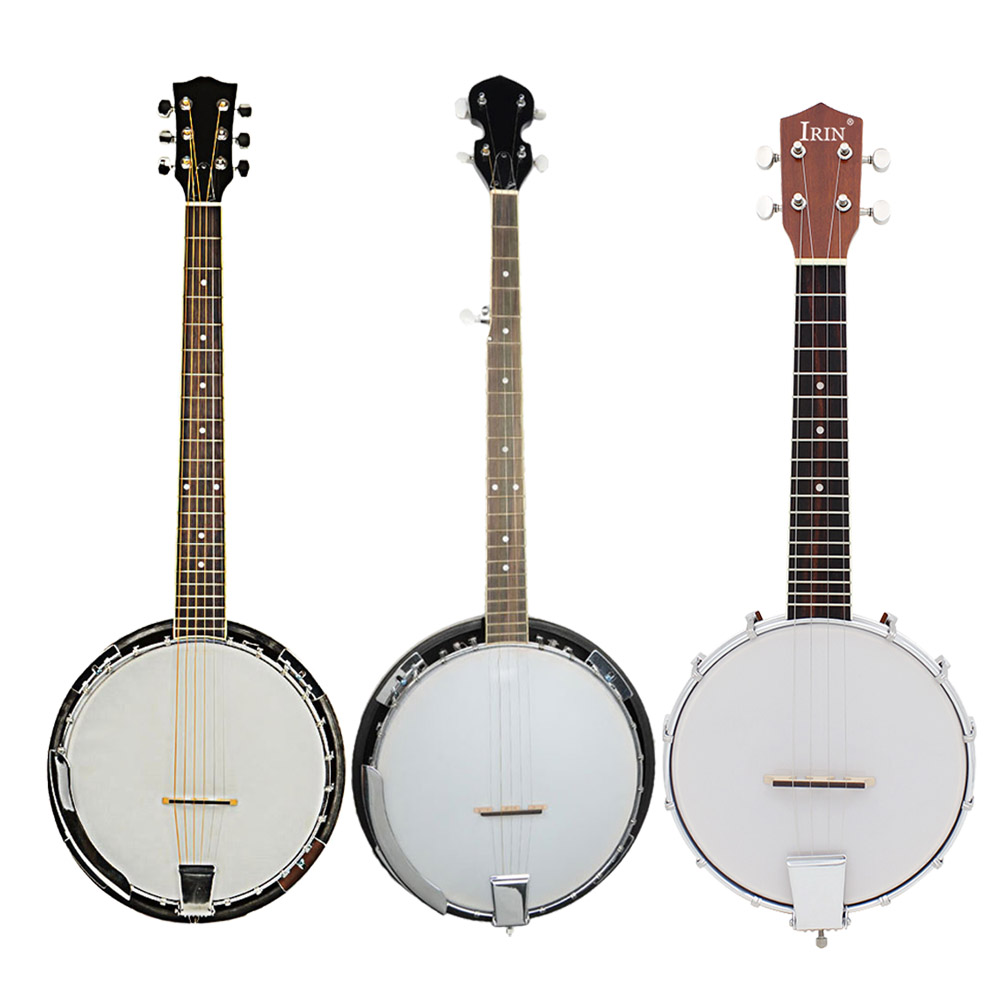
Suddenly, you’re faced with three options, rather than one. This raises the question: “What style of banjo do I want to buy if I’m just starting out?” I’ll assume you’re looking for the easiest one to play on as well.
Well, overall, your choice of banjo does depend on the type of music you’re interested in learning, whether it be old time banjo music played in a clawhammer style, or three-finger picked banjo style found in bluegrass music.
Separating Style from Instrument, and Instrument From Song
Keep in mind, the style of playing is a separate matter from the type of banjo, and the songs you’ll be wanting to learn.
For instance, you could be learning an easy song, on a banjo that’s harder to play (for reasons I’ll get into), and in a style that’s very hard for you to play.
Or, conversely, you could be playing a difficult song on a very easy playing banjo, in a chosen style that’s easier for you.
All that might sound confusing, but the point is, some banjos are just easier to play. To know why, we first must look at the different kinds of banjos you can get.
Here’s a video by banjo player Jim Pankey, that can help you decide what type of banjo you might want to get, as a beginner player or someone who’s never played before.
Resonator Vs. Open Back Banjo

Now, if you happened to watch the above video, you would have heard Jim talking about two types of banjos – resonator banjos and open-back banjos.
He talks about the fact not only do both banjos look different, but they feel different to play and they also sound different when heard.
In the end, Jim recommends a resonator banjo due to its overall versatility as a good first banjo to buy. Yes, it does look good, and it sounds good, but you’re probably still wondering: is it easier to play than the open back style of banjo?
On top of that, are either of them easier to play than your average guitar?
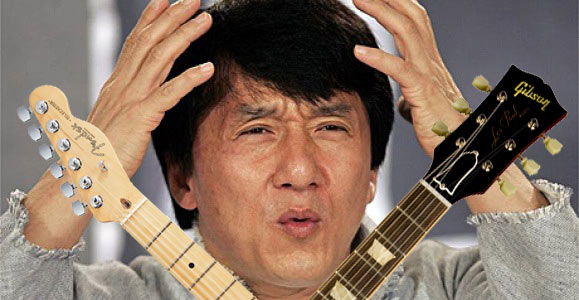
If you ask me, the style of banjo isn’t going to determine how easy it is to play as much as the playing style you’re going to have to learn.
I’m not here to give you a lesson in how to play the banjo, but I will at least point out that there were two main styles of playing banjo, both of which Jim played in the video, and they are the clawhammer style, and the 3-pick style.
Clawhammer Vs. Three Pick Style of Playing Banjo
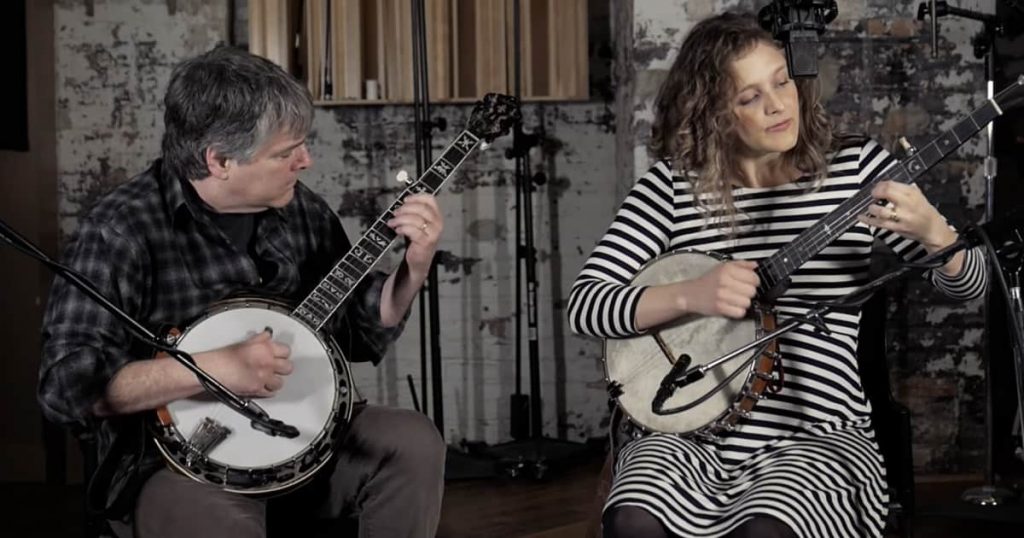
Between clawhammer technique and 3-pick style, you might imagine one is easier than the other, but it’s hard to say without a doubt that one style is easier than the other. Again, it depends on you, the size of your hands, how much dexterity you have, etc.
This all comes back to what I mentioned earlier about everyone having different coordination, and hand strength and sizes. For some, wearing the finger picks to play the banjo will not only sound better, but be more logical and simpler to execute.
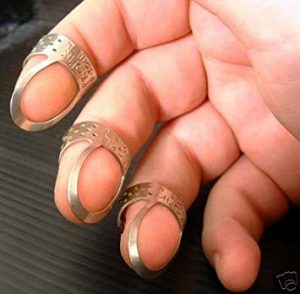
On the other hand, some might argue that clawhammer style is easier because you’re more free to play how you want, without having picks attached to your fingers.
Basically, you’re either going to enjoy playing with the picks on your fingers, or not enjoy it.
When it comes to these two playing styles, only YOU know which one you like better and perhaps find easier. You’ll just have to try both playing techniques, and see what you think. Same goes for the type of banjo you choose. Go to the store, try a few out, and see what feels most comfortable.
Now, you might say, “Sir, you’re avoiding the question. Which type of banjo is the easiest to play? Stop claiming it’s only subjective and talking in circles.”
To that I say, “I am feeling the pressure here, and I will do my best to provide more information”.
| Tfw Banjolele Starter Kit – With Case And Accessories |
|---|
| Banjo Ukulele 4 String Banjos Lele Ukelele Uke Concert 23 Inch Size (Type 4) |
| 5 String Resonator Banjo With 24 Brackets | Closed Back And Geared 5Th Tuner |
| Jameson Guitars 5-String Banjo 24 Bracket With Closed Solid Back And Geared 5Th Tuner |
| Gold Tone 5-String Banjo Cc-100Rw |
Banjo Neck Width
Banjos, depending on the type and number of strings, all have slightly different sized necks, in terms of length and width. But it’s width I’m more concerned about here, because that generally determines how much space there is between each string.
For those who don’t know, the “neck” of a banjo (or guitar) is the long skinny part that the strings run along that connects the top of the instrument (the head) to the bottom (the body).
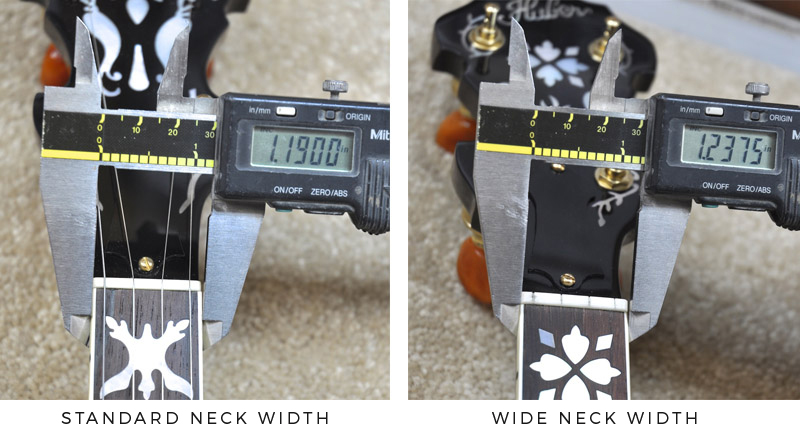
Generally, the more strings the banjo has, the wider the neck, although, at the same time, that’s not necessarily true in every case.
Sometimes the neck can be quite narrow on a banjo, and, although there might be more strings present, they can be pushed much closer together.
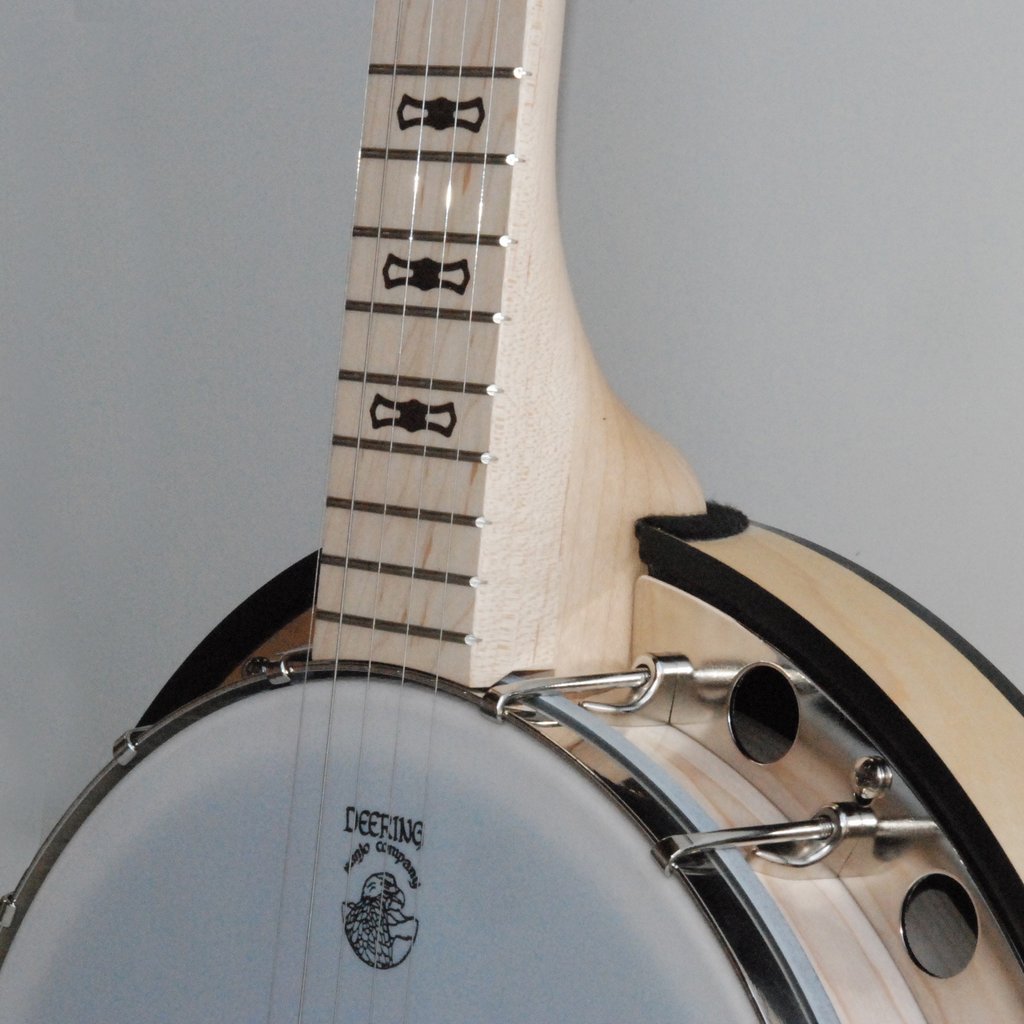
For me, personally, I find that if the neck is narrower on a banjo (or guitar), on one hand it’s easier to play chords (ie. hold down strings across the whole width of the neck), because the strings are closer together.
Here is a video from Guitar Compass with a teacher playing easy chords on a banjo with a fairly narrow neck.
As you can see, it’s easy for his hand to reach across the neck of the banjo, whereas guitars typically have much wider necks than banjos and are therefore harder to reach across to make a chord, especially a barre chord.
Check out this chart below showing chords on a 4-string banjo.
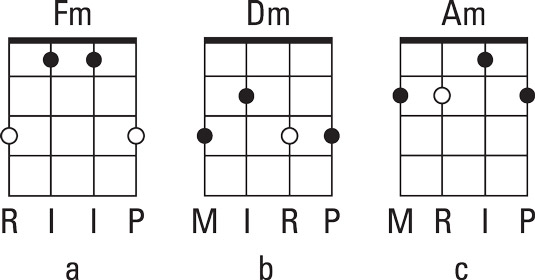
Now check out this chart showing chords on a guitar.
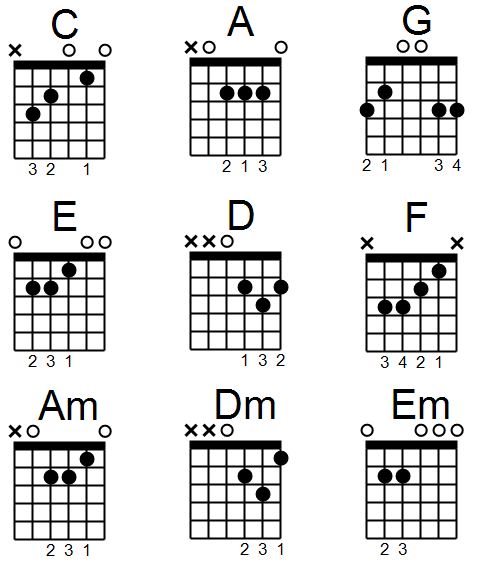
As you may notice, the guitar chords are done across 6 strings, whereas on the 4-string banjo, it looks (and is, if you ask me) a lot easier. Not only is it physically easier, in my opinion, but it’s also mentally easier to remember because there are less strings.
Even on a 6-string banjo, the neck is going to be skinnier than your average acoustic guitar, and I think that makes it a little easier to play.
Banjo Tuning
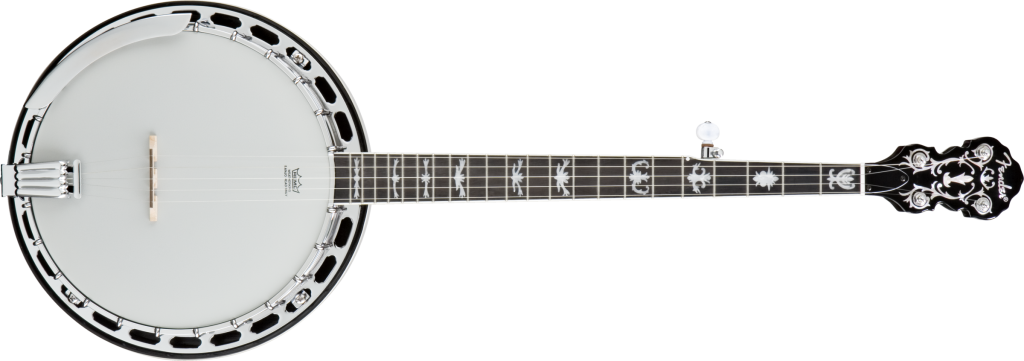
Banjos score another point in this section for ease of use, because your standard 5-stringer banjo is tuned to open G. That means when you strum down the strings without holding anything, you’re playing the G chord.
With a few minor finger adjustments, you can learn two more chords to start playing many familiar tunes within minutes.
Here’s Tony Trischka from ArtistWorks strumming a banjo in open G (bluegrass tuning), and also showing some other simple chords (C, D7) you can play almost right away.
With guitars, if you play the strings all open, you get an E minor 11th, which is some crazy jazz chord that no one uses, but is still pretty cool.
Banjo Action
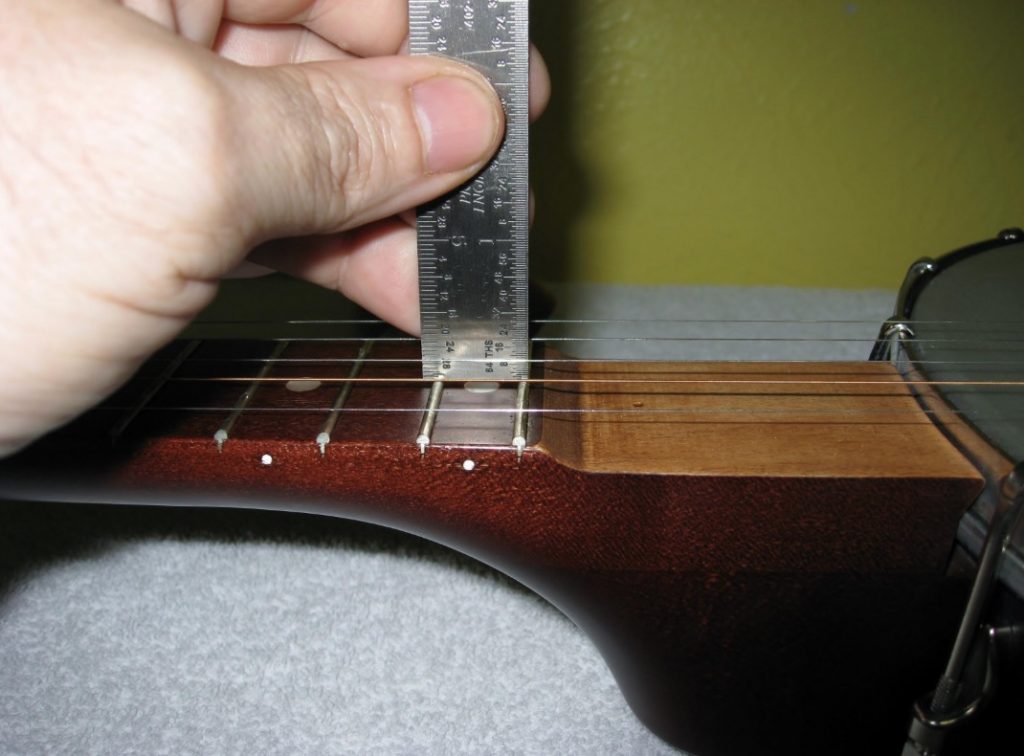
If you don’t know the term “action”, as it relates to stringed instruments, we’ll let Deering Banjos, a well-known banjo company, explain the concept to you:
“Action is the distance/clearance between the bottom of the string and the top of the fret. Action height can be a matter of personal preference to some degree. At Deering, we set the action at 1/8” at the 22nd fret; any lower and you might get buzzing/vibrating of the string against the fret as you play. Many professional players prefer their action at ¼” clearance. If you pick hard, this action height might work best for you to provide enough space for string vibrations. Hammer-ons and pull offs are clearer with higher action. The coordinator rod on the inside of the pot/rim of the banjo is used to adjust the action of the banjo neck. The coordinator rod also serves to firmly anchor the neck to the rim, making a stable unit.”
For guitars, I use 3/32 inches on the bass side and 1/16 inches on the treble side, which is slightly lower action than Deering mentions with their banjos. In any case, I’m not what you’d call an expert on setting the action of guitars and / or banjos, but I personally, in general, like a lower action, because it’s easier to hold the strings down with your fingers. I’ve played on instruments where the action is what I’d consider high, and it becomes too hard to play.
Since there isn’t really a universal standard for action on guitars or banjos that I know of, I can’t really say which one is easier, I just know that I like the action a bit lower for ease of playing.
Banjo String Gauges
When it comes to string gauges, I’m talking about string thickness.
Generally speaking, there’s light gauge, medium gauge, and heavy gauge strings for banjo. This goes for guitar as well.
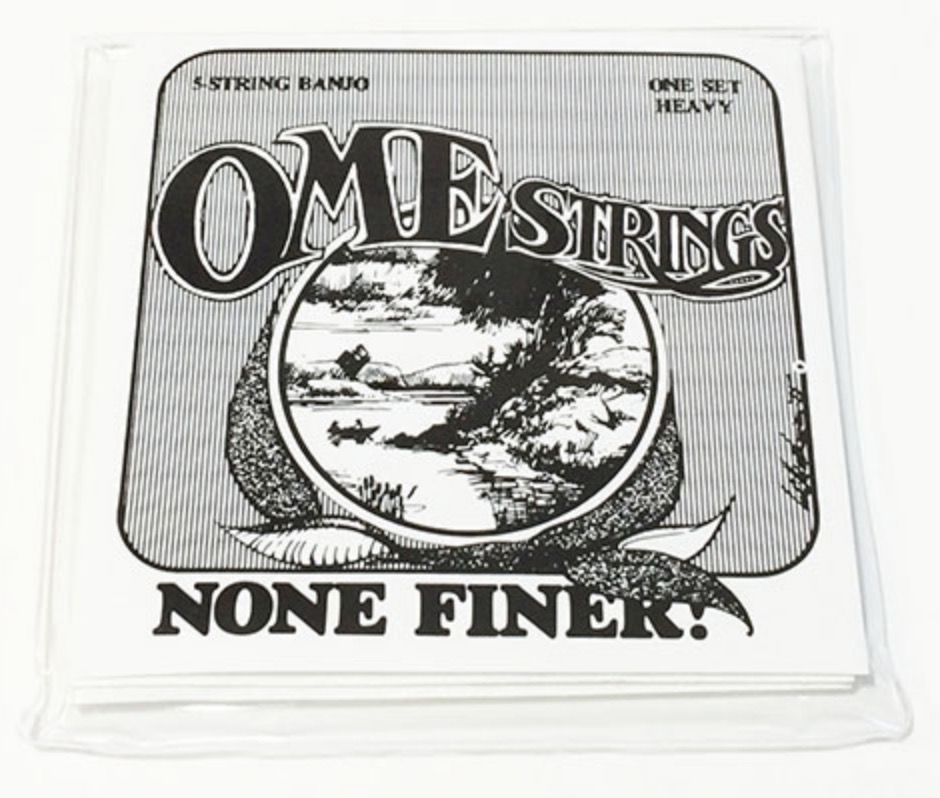
The gauge of the strings affects the sound, and it is up to the player which thickness they want to use on their banjo.
The thicker strings, much the same as with a guitar, are tougher to bend, and the lighter / thinner gauge strings are often so thin that some people complain that they’re cutting into their fingers. That’s why I typically use medium gauge strings on either guitar or banjo.
Here’s a video showing the different sound that comes from the different thicknesses of strings on a banjo. You’ll need to listen closely, as hearing the difference between each type of string is subtle.
One last note here about strings, is that you can string a banjo or a guitar yourself, but it’s not easy when you’re starting out. Still, it can be done by you, and you don’t need a specialist to do it.
There are other things like fixing a warped neck, or other repairs, that an expert can and should do. But changing and replacing the strings is something you can learn, without too much trouble.
Guitar
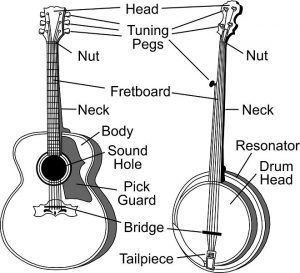
Guitars, for the most part, are 6-stringed instruments that are noticeably larger than banjos, body-wise, and have wider necks. They also sound a lot different.
I say “for the most part”, because there are also 12-string guitars, which are essentially guitars with double the number of strings, and yet the strings on a 12-stringer are grouped like so:
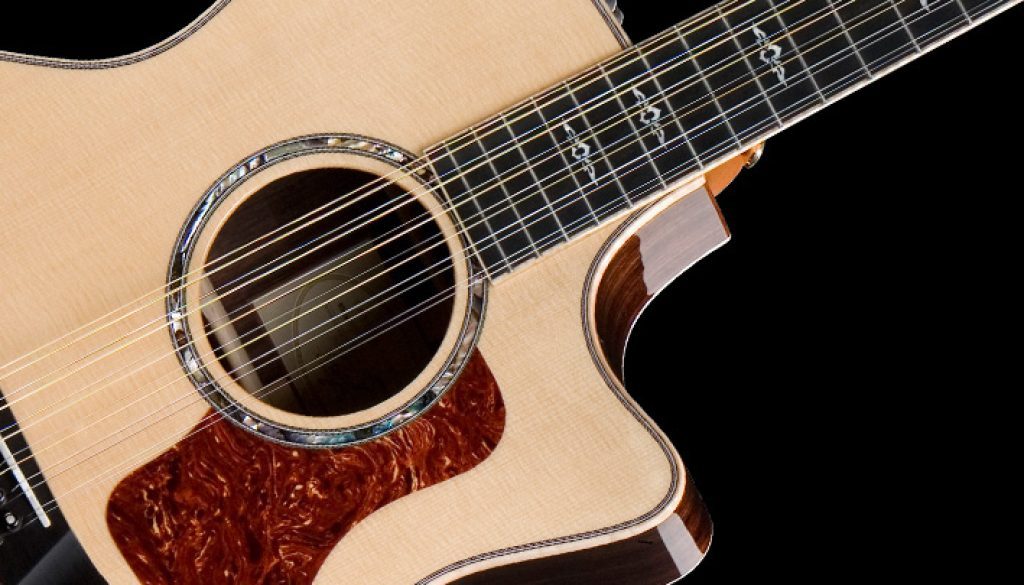
The vast majority of players play 6-stringers, though.
Acoustic vs. Electric Guitar
There are two main types of guitar – acoustic and electric. It’s important to note that acoustic and electric guitars don’t function in the same way, and they don’t sound the same either.
Generally speaking, one is a hollow body (acoustic) and one is a solid body (electric).
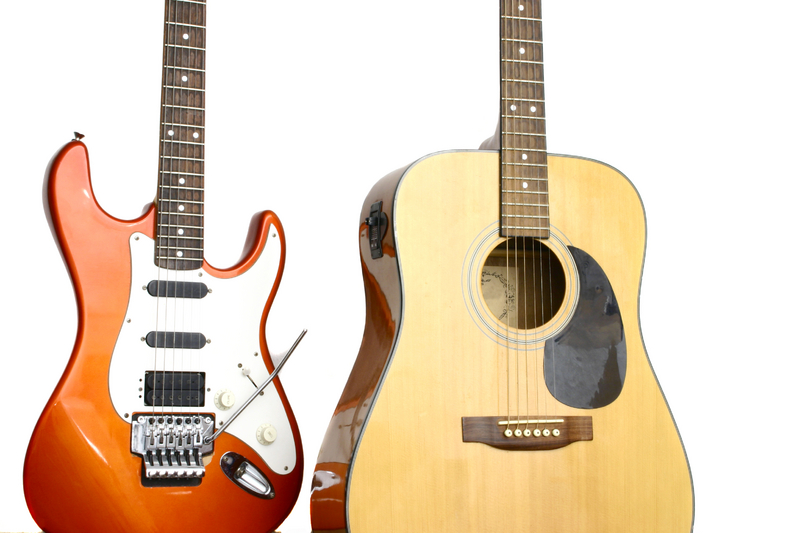
One thing that is the same about acoustic and electric guitars is that they are strung the same way. This means that they both have six strings, and that those strings are in the same order from top to bottom, thickest to thinnest (EADGBe).
What this also means is that whatever you can play on an acoustic, in terms of riffs or chords, is going to be the same fingering on an electric. So, in that sense, they aren’t too different.
In terms of which guitar is easier to play, we have to take a closer look at how each is set up.
Acoustic Vs. Electric Guitar Strings
Acoustic and electric guitars each use different string materials, giving them a different sound, and a different playability as well.
Electric guitar strings are made from materials with magnetic properties, like steel, chromium, and nickel. They don’t need to resonate acoustically because their sound is amplified electrically, though an amp.
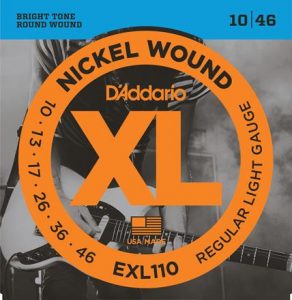
Acoustic guitar strings do need to be more resonant, because the sound of your playing resonates through the body of the guitar by way of the sound hole, and then projects back out acoustically into the room.
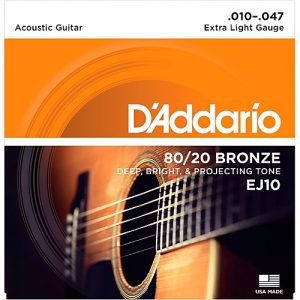
When you’re at the music store, acoustic strings and electric strings are in their own little sections, and they’re usually clearly labelled as either one or the other.
There is no pack of strings that just says “guitar strings”. They list all of the qualities of the strings, and, if nothing else, you can tell which guitar the strings are for by the materials that they are made of.
Action Rant, Part 2
In my experience, I have found that electric guitars are a little easier to play, due to the action being lower.
I mentioned this earlier, that I like a lower action, because even that fraction of an inch lower can make a difference in how hard you have to push down to play the string or strings.
When you’re just starting out, one of the biggest complaints I’ve heard from students is that the strings hurt your fingers, and this has a lot to do with finger strength (which can be built up with practice) and also the material of the strings and the thick or thinness of the strings slicing into your finger pads.
I’m not exaggerating either, I’ve had one or two younger students literally shed tears over how much their fingers hurt after trying to practice their playing!
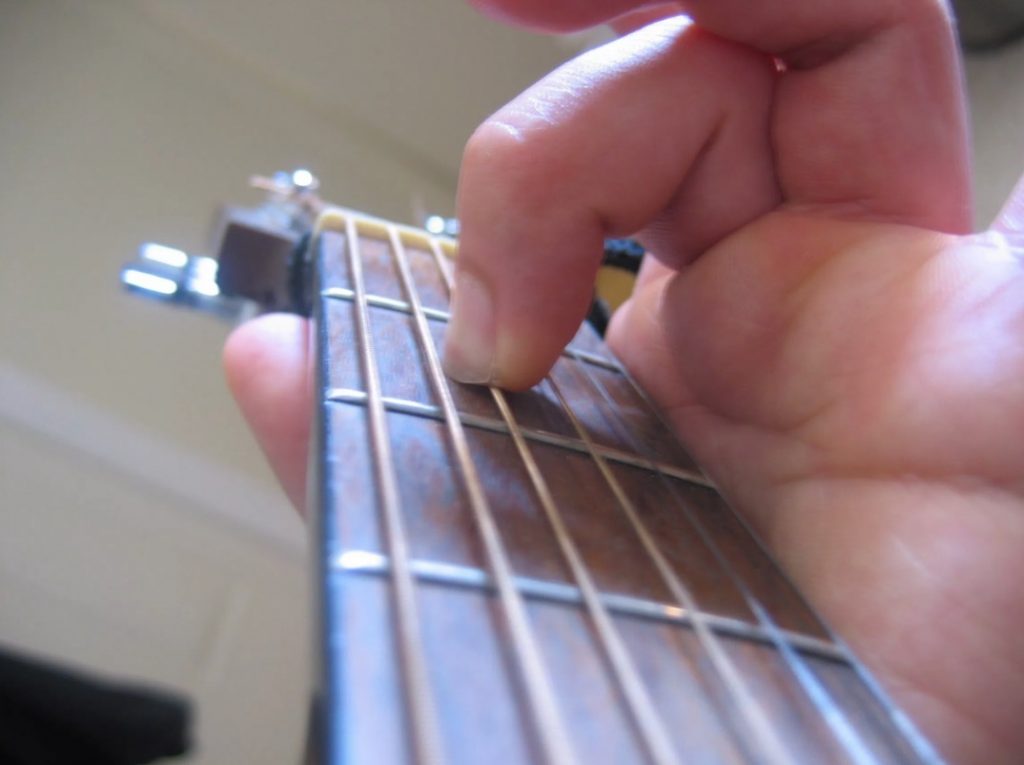
Acoustic guitars, since the strings do need to resonate more, have that higher action (strings are higher off of the fretboard / neck), and that makes it harder to push the strings down than on an electric.
I’ve been playing for 25 years now, and I still don’t really enjoy stringed instruments where the action is higher than normal, and sometimes it can be.
I’ll also share this story – my first guitar was an old acoustic that was laying around the house, and the action was twice as high as it should have been because the neck was warped. As such, I just thought I was extra terrible at playing that instrument, and it lead me to believe that all acoustic guitars were like that and I almost quit.
One more thing about the fingering of guitars and banjos has to do with fingernails, but still relates to the action. If your fingernails on your fretting hand (not your strumming / picking hand) are too long, it might cause you problems and make things harder than they have to be.
This is because your fingernails can get in the way of your fingers pushing down the strings all the way to the fretboard. I’ve had students who can’t push down the strings for this reason, because they have really long fingernails, and yet they refuse to cut them. That’s a no-win situation!
So, chew your nails, kids!
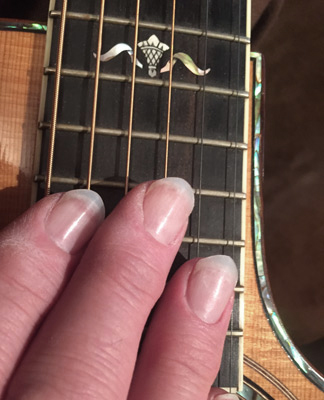
My point is, if you’re new to either banjo or guitar, at least take a look at the action of it so that you a) understand the concept, and b) can begin to judge how appropriate the action is on the instrument you have. You can have the action lowered if you take the instrument in.
Fingernails, Continued
On the other hand, if you have longer fingernails on your strumming hand, this can be helpful when it comes to both picking and strumming.
Some super famous guitar players are known for picking their strings with their fingers, and you can basically use longer fingernails as separate picks.
This works with banjos too, as banjos are a more pick-centric instrument. Fingerpicking for bluegrass, especially, is a main feature of the music. Banjos, in general, are all about flying fingers and pickin’ and grinnin’.
Here’s a video with famous guitar fingerpicker, Dire Straits’ Mark Knopfler, showing some of his finger style playing.
Styles of Guitar Playing
If you ask me, there seems to be more versatility with guitars, because there are more playing techniques and simply more styles of guitars out there. Guitars lend themselves to more styles of music as well.
I think that this makes guitars easier to learn, because you can approach them from so many different angles and strumming and picking styles. There’s fingerpicking, alternate picking, sweep picking, gypsy rhythms, and tapping. Plus many others! Or you can just make up your own style completely, and no one seems to mind.
For instance, if you want to play punk rock guitar, you just need to learn a few basic power chords.
Here’s the Germs playing their song Manimal from the documentary, The Decline of Western Civilization. Keep an eye on that guitar player, Pat Smear (now in Foo Fighters). The playing style here is simple but effective, and the idea is that anyone can really do it.
Then again, this kind of music might make you want to jump off a bridge. Fair enough! You might be interested in something a little more mellow and pleasant-sounding. Why not try to learn some bossa nova?
Back to the point of what’s easy vs. what’s not easy, different guitar styles of playing are going to be harder than others. Bashing out a simple rock song might be easier for you than playing The Girl From Ipanema, but if you want to play in that style, you’ll hunker down and learn it eventually.
Using a Guitar Pick
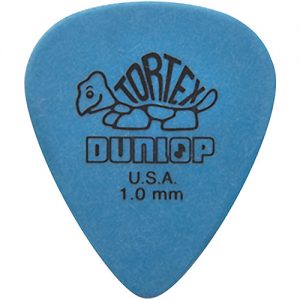
We have yet to mention the wonderful world of guitar picks. Because beginners are always hurting their fingers on both hands (fretting hand and strumming / picking hand), using a guitar pick does make some things easier because now you won’t have to pick or strum with your hand, which can hurt when you’re just starting out. You just use the pick instead!
Guitar picks come in different shapes, sizes, and thicknesses. Like guitar strings, they range from super thick to super thin. The one you choose will depend on your preference.
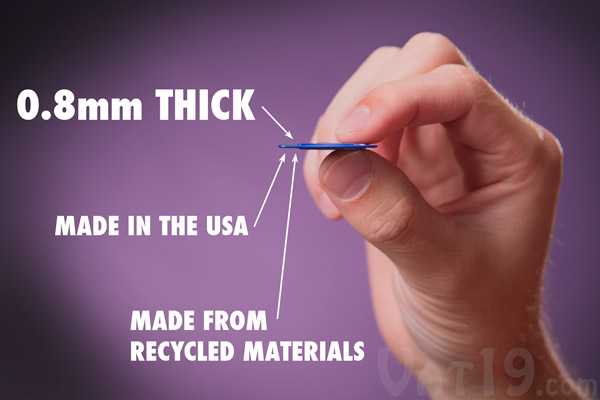
The rabbit hole runs pretty deep with guitar picks, in terms of variety and reasons to choose one over another.
Some have special grips, tips, glow-in-the-dark, special designs, some are aerodynamic, and some will actually go out and get you coffee and bring it back. Imagine that!
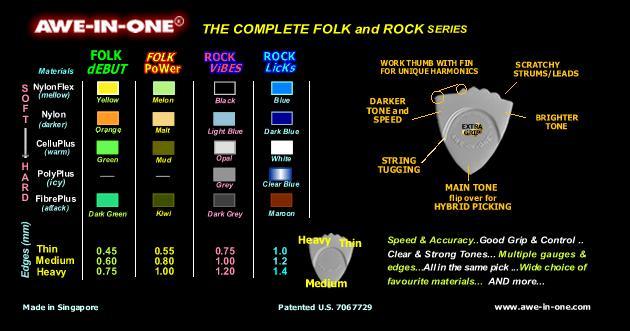
At then end of the day, some guitar players use picks, some don’t. Once again, you’ll have to try them out to see if you like using them at all. Keep in mind, some guitar players never use a pick, unless forced to at gunpoint.
Lindsey Buckingham don’t use no pick!
What’s Easier, Guitar or Banjo? – Recap
It takes a long time to master an instrument. The ease with which you learn the instrument will depend on the style of music you want to learn.
The guitar has more notes and finger athletics to master than the banjo. This will make it harder to learn the banjo than the guitar for some people. The banjo has fewer strings, which can make it a bit easier to play.
If you’re just starting out and the action is too high on either instrument, that’ll make it harder. If the strings are too thin, they might cut into your tender, un-calloused fingers. If the strings are too think, they’re harder to pin down and harder to bend.
You’ll probably have a voice in your head complaining as you begin to learn, but just go easy on yourself.

Overall, the ease of learning really depends on whether you’ve had any experience with a stringed instrument, if you have a good teacher, and the style of music you are trying to learn.
The determination and persistence of the student matters to how easily he or she learns an instrument, too. Many people put down the guitar after a few months if they haven’t learned it properly.
A banjo player who practices for a few months can really enjoy the playing and won’t quit until they’ve enjoyed playing their favoirite songs.
Conclusion
Learning a new instrument can be hard. Once you’re as old as me (I’m 204), you’ll realize that there are no shortcuts in life and that there’s really no such thing as having it easy all the time.
That said, if you consider everything I’ve talked about here today, you can make more informed decisions when it comes to learning either the guitar or the banjo. Good luck, and tell me how it goes in the comments and if I missed anything!
 |
 |
 |
 |

About Jay Sandwich
Jay is an ex-shred guitar player and current modular synth noodler from a small town somewhere. Quote: “I’m a salty old sandwich with a perspective as fresh as bread.” No bull.
Leave a Reply
Check for FREE Gifts. Or latest free acoustic guitars from our shop.
Remove Ad block to reveal all the rewards. Once done, hit a button below
 |
 |
 |
 |




